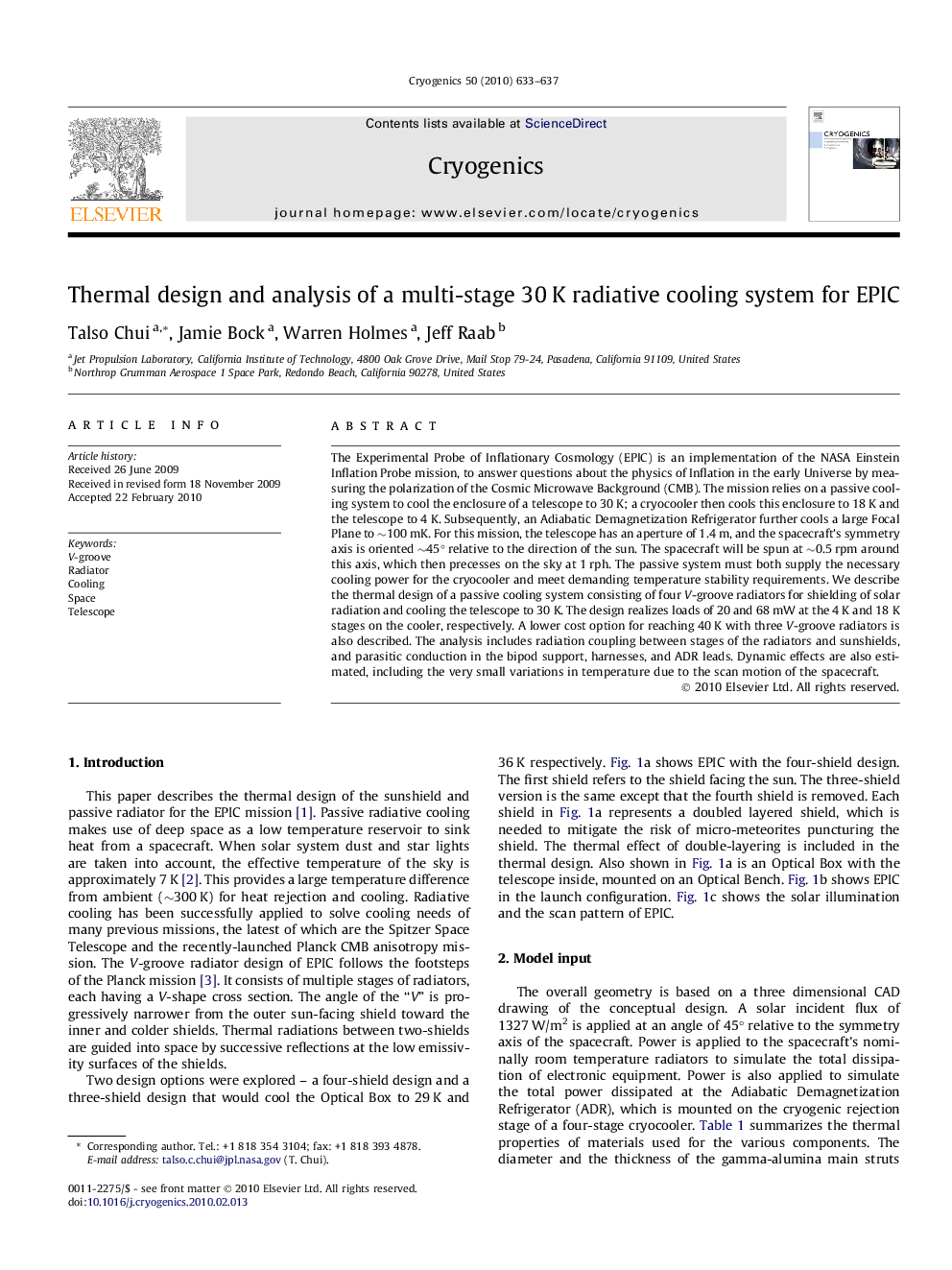| Article ID | Journal | Published Year | Pages | File Type |
|---|---|---|---|---|
| 1507977 | Cryogenics | 2010 | 5 Pages |
The Experimental Probe of Inflationary Cosmology (EPIC) is an implementation of the NASA Einstein Inflation Probe mission, to answer questions about the physics of Inflation in the early Universe by measuring the polarization of the Cosmic Microwave Background (CMB). The mission relies on a passive cooling system to cool the enclosure of a telescope to 30 K; a cryocooler then cools this enclosure to 18 K and the telescope to 4 K. Subsequently, an Adiabatic Demagnetization Refrigerator further cools a large Focal Plane to ∼100 mK. For this mission, the telescope has an aperture of 1.4 m, and the spacecraft’s symmetry axis is oriented ∼45° relative to the direction of the sun. The spacecraft will be spun at ∼0.5 rpm around this axis, which then precesses on the sky at 1 rph. The passive system must both supply the necessary cooling power for the cryocooler and meet demanding temperature stability requirements. We describe the thermal design of a passive cooling system consisting of four V-groove radiators for shielding of solar radiation and cooling the telescope to 30 K. The design realizes loads of 20 and 68 mW at the 4 K and 18 K stages on the cooler, respectively. A lower cost option for reaching 40 K with three V-groove radiators is also described. The analysis includes radiation coupling between stages of the radiators and sunshields, and parasitic conduction in the bipod support, harnesses, and ADR leads. Dynamic effects are also estimated, including the very small variations in temperature due to the scan motion of the spacecraft.
